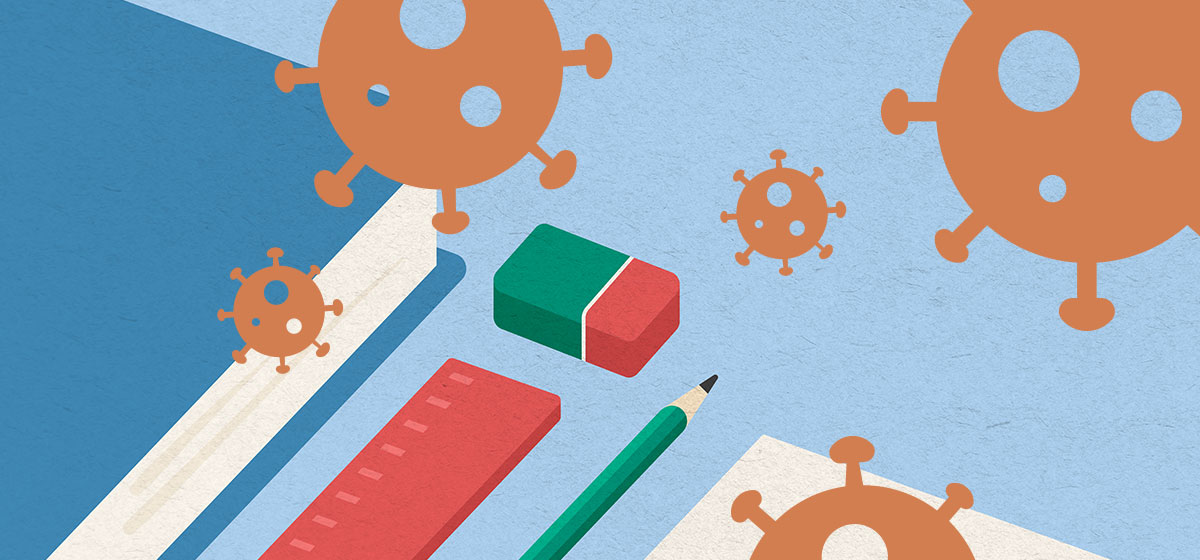Colleges and Schools Can and Should Open in a Way That Does the Least Harm

Any untimely death is a tragedy. Our youth die in transit to and from schools and universities every year, but these institutions are not shut down as a result. Engaging in life involves some risk of death. COVID-19 deaths in youth are rare. Rational policies should aim to minimize such risks with no expectation of eliminating them completely.
Relative risks to youth
The initial response to COVID-19 was to shut down everything without regard to risk stratification. There’s now a debate about how best to reopen, including schools and colleges. We know that risk varies massively by health status and age. On average, at least 40 percent of the U.S. deaths from COVID-19 were from people living in nursing homes or assisted-living facilities. Similarly, those over age 64 are 400 times more likely to die of COVID-19 in the United States than those under age 25; the risk of dying while COVID-19 positive is approximately 1 in 2,000 for those under 25 and 1 in 5 for people 64 or older. As of June 10, 2020, there were 137 deaths over 4 months for those ages 0–24. In comparison, motor vehicle accidents killed more than 7,500 youth ages 0–24 in 2017. There would need to be a 40-fold increase in COVID-19 deaths to approach this level for the year. We don’t stop driving due to non-zero risk of death.
Overestimating the likelihood of death and disability in youth
In any epidemic, the severe cases are the ones first diagnosed, and we miss many of the milder ones, especially without widespread testing. The CDC estimates that the number of asymptomatic cases is between 20–50 percent. Whatever the number, it means the true risk of death from COVID-19 is much lower than it appears, especially for the young. Moreover, parents are scared about the reports of the very rare Kawasaki-like disease in children—multi-system inflammatory syndrome (MIS-C). While the total cases of MIS-C are unknown, likely less than 500, they are a small percentage of the total COVID-19 deaths. In the United States, there have been 21 total deaths for ages 0–14 and 116 for ages 15–24 in over 250,000 cases. The great majority of children recover from MIS-C, as from COVID-19.
College-age students
College students are 12 times more like to die of an accidental injury, 8 times more likely to die of an accidental drug overdose (mostly opioids), 7 times more likely to die by suicide, and 3 times more likely to die in an alcohol-related motor vehicle accident than COVID-19. Prior to the chickenpox vaccine in 1995, college-age students were at least 3 times more likely to die from chickenpox than COVID-19. However, to keep these numbers low, preventive measures and strategies that reduce the spread of positive cases need to be implemented and adjusted based on evolving effectiveness data.
The unique costs to adolescents
There are important opportunity costs of eliminating on-campus activities with regards to music, sports, career internships, academic endeavors, community service and so on. There are also unique costs for adolescents. Neuroscientists now define adolescence as ages 10–24 because these are the years during which radical changes occur in the brain, leading to a fundamental rewiring. Seldom-used areas of the brain are eliminated or minimized, and regularly used areas are reinforced with enhanced connections. Loneliness and social isolation are associated with more negative attitudes and impaired attention, impulse control, and decision making. We do not know the costs of virtual schooling and social isolation on adolescents yet, but there is a potential risk for a negative impact—as any parent knows who saw his or her child’s screen time jump to 10+ hours a day during lock-down.
A balanced approach
The consequences of missing in-person school and activities likely far outweigh the risks of return. However, the risks will never be zero because the risks of living are never zero. The bigger challenge is how to situate return-to-school policies into the broader array of public policies that must serve to protect the parents, grandparents, teachers, administrators and social contacts of kids. New cases should be expected and proper measures and protocols should be in place to minimize spread, especially to those who are vulnerable. Legislators and public health experts need to create specific guidelines and tort-reform to aid schools and universities so students can return to in-person schooling if they choose.
A pandemic leaves us without a perfect choice. The best option under the circumstances is to minimize the total harm done through focused policies for each risk group. The data we have indicate that it would be wrong and even harmful to keep the nation’s schools and colleges shut down. In our view, there is a need to save all the lives we possibly can while also giving youth an opportunity to live them—including in the classroom and on campuses.





